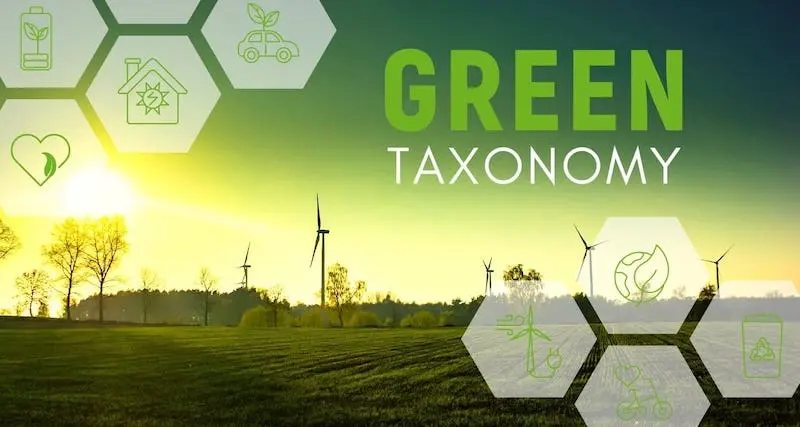About Green Taxonomy:
- A green taxonomy is a framework for defining what can be called environmentally sustainable investments.
- It is a classification system that defines which economic activities and assets are “green” or environmentally sustainable.
- Green taxonomies are useful instruments, and they have several complementary purposes:
- Taxonomies help prevent greenwashing;
- Taxonomies help investors make informed investment decisions; and
- Taxonomies channel investment toward sustainable or green economic activities and assets.
- Structurally, all taxonomies are similar. So far, they all include the goals of climate mitigation and adaptation, and some also include other environmental objectives such as biodiversity conservation, for example.
- To be considered green, an activity must substantially contribute to at least one of the environmental objectives.
- Often, taxonomies also include “do no significant harm” criteria (i.e., an activity that substantially contributes to one environmental objective should not harm another environmental objective) and social safeguards (i.e., compliance with human rights).
- Some taxonomies only definewhat is green, and others, such as the recently launched Indonesian taxonomy or the proposed Singaporean taxonomy, use a “traffic light” approach, where the economic activities are split into different categories (i.e. green, amber, or red) to classify their environmental sustainability.
What is Greenwashing?
- It is the process of conveying a false impression or misleading information about how a company’s products are environmentally sound.
- Greenwashing involves making an unsubstantiated claim to deceive consumers into believing that a company’s products are environmentally friendly or have a greater positive environmental impact than they actually do.
- In addition, greenwashing may occur when a company attempts to emphasize sustainable aspects of a product to overshadow its involvement in environmentally damaging practices.
Companies can also greenwash initiatives with vague claims that don’t provide real data or scientific validation for the claims.
Q1: What is the Association of Southeast Asian Nations (ASEAN)?
It is a regional intergovernmental organisation of ten Southeast Asian countries. It was established on 8 August 1967 in Bangkok, Thailand, with the signing of the ASEAN Declaration (Bangkok Declaration). Member States: Indonesia, Malaysia, Philippines, Singapore, Thailand, Brunei, Laos, Myanmar, Cambodia and Vietnam. It promotes intergovernmental cooperation and facilitates economic, political, security, military, educational, and sociocultural.
Source: Towards a green growth: On the RBI and a green taxonomy
Last updated on July, 2025
→ UPSC Notification 2025 was released on 22nd January 2025.
→ UPSC Prelims Result 2025 is out now for the CSE held on 25 May 2025.
→ UPSC Prelims Question Paper 2025 and Unofficial Prelims Answer Key 2025 are available now.
→ UPSC Calendar 2026 is released on 15th May, 2025.
→ The UPSC Vacancy 2025 were released 1129, out of which 979 were for UPSC CSE and remaining 150 are for UPSC IFoS.
→ UPSC Mains 2025 will be conducted on 22nd August 2025.
→ UPSC Prelims 2026 will be conducted on 24th May, 2026 & UPSC Mains 2026 will be conducted on 21st August 2026.
→ The UPSC Selection Process is of 3 stages-Prelims, Mains and Interview.
→ UPSC Result 2024 is released with latest UPSC Marksheet 2024. Check Now!
→ UPSC Toppers List 2024 is released now. Shakti Dubey is UPSC AIR 1 2024 Topper.
→ Also check Best IAS Coaching in Delhi















